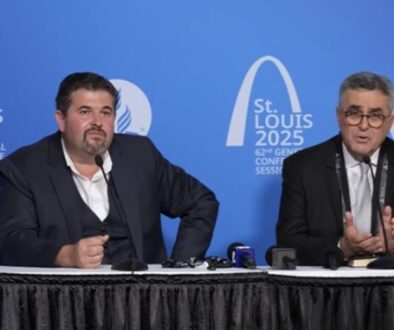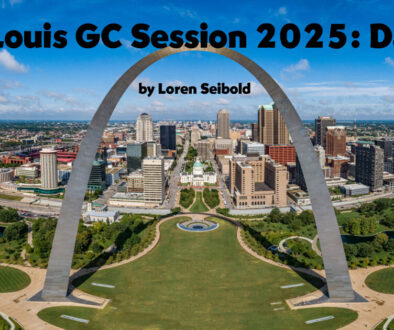Since They Are Wrong, We Must Be Right: A commentary on the 2017 Faith and Science Conference in Saint George, Utah.
By John McLarty, August 2, 2017:
During my college years (1970-1975) and through the next decade or so, I imagined Adventist faith as a movement committed to truth. We had a body of explicit theology that united us, of course, but it was not unusual to hear church members, including clergy, say, “I’ll be an Adventist until I find a community with a truer, clearer vision of God.” Those who made this kind of statement did not expect to find another church with a truer, clearer vision of God, but they were affirming a radical commitment to truth, a commitment that superseded institutional loyalty. After attending the recent Faith and Science Conference in Saint George, Utah, I am puzzling over how to situate myself in the Adventist Church. The principals at the conference were emphatic: the quest for truth regarding origins is over. There is only the quest for more evidence that what we believe—both the creedal statement regarding a “recent creation” and the non-creedal notion that Noah’s Flood created most sedimentary rock—is correct.
The conference bore the official imprimatur of the denomination. The organizers declared there would be no debate. The purpose of the conference was to affirm the Church’s doctrine of creation. Over and over I heard this message: We are right. The Bible agrees with us. Science agrees with us. The explicit language of the presenters was more measured. They would say, Our views are biblical, that is why we are so confident of their accuracy. We are merely declaring the plain reading of the Bible. And there is a growing body of scientific evidence that is compatible with Bible geology. Repeatedly, I heard scientists warn against excessive confidence in science. Never once did I hear any caution about excessive confidence in the Bible as a science text or excessive confidence in our interpretation of the Bible. In this conference on “Faith and Science,” faith offered a certain path to truth and science was a grave threat. Wild, extravagant claims by scientists hostile to theism would be countered with wise, measured commentary from a theistic perspective.
It was a bit curious in a conference that billed itself as a presentation of Adventist orthodoxy, that four of the key presenters were non-Adventists. Two of them explicitly stated Bible interpretations and scientific theories that are rejected by BRI (the Adventist theological watchdog agency and GRI, the Adventist scientific watchdog agency). The non-Adventists argued the universe is 6000 years old and that the “laws of nature” were altered during the Flood. They based their arguments on the plain reading of the creation texts (including the Sabbath commandment—for in six days the Lord made the heavens and the earth and the sea and all that is in them.) It appears the Church is open to consideration of views that are more extreme in their rejection of physical evidence but has decided to foreclose all investigation that is more open to the physical evidence.
The non-Adventist presenters cited only the Bible as a definitive authority. Adventists, however, frequently cited two authorities, the Bible and The 28. This appeared to be a change from the traditional Adventist formula “the Bible and the Spirit of Prophecy.” Judging from the language used at the conference, it appears to me that the Creed has replaced Ellen White as the functional shorthand for acceptable Bible interpretation among Adventists. In both cases the preferred usage is a euphemism—Spirit of Prophecy instead of Ellen White, The 28 instead of the creed.
The particular issues of Bible interpretation and science that were presented at the conference have been argued exhaustively by people who read this web site. I have offered my own opinions in other articles. Here, I will make a couple of social observations. First, the conference succeeded in presenting a persuasive affirmation of creationism. Judging from conversations I heard, most attendees found the presentations entirely believable. Adventist elementary and secondary teachers left happily confident that Noah’s Flood created the geologic column. However, Adventist students who earn doctorates in biology or earth sciences find the positions presented at the conference unbelievable. Probably less than five percent of Adventist biologists and geologists who are not employed by the denomination believe in Flood Geology. Flood Geology is so unbelievable that we should prohibit our members from doing advanced studies in biology or geology unless they plan to work for the denomination. Even if Leonard Brand is their major professor, unless they are employed by the church the likelihood they will find Brand’s theories believable is minuscule.
Second, the official defenders of orthodoxy face an opposite and even more difficult problem in what the theologians of the Biblical Research Institute (BRI) and the scientists of the Geoscience Research Institute (GRI) actually believe. Here is an outline of those beliefs: The universe is about 14 billion years old, just as conventional science says. The solar system is 4.5 billion years old, just as conventional science says. Life on earth is a few thousand years old, no matter what conventional science says. How many is a few thousand years? Six? No, more than that. Ten? That makes our science easier? Twenty thousand? Fifty thousand? No one can say. Because the church no longer accepts the genealogies of Genesis as a basis for geochronology. (See the BRI paper by Randal Younker.) There is no biblical date for creation. There is only the creedal limit of “recent.” Further, the geologic column is a reasonably accurate description of how the rocks and fossils are arranged on the surface of the earth and radiometric dating gives reasonably accurate relative dates. And we have no idea how to explain either of these facts. There is no Flood model.
The scientists of GRI are popular among our members because they offer critiques of conventional geology and evolutionary theories. These critiques are derived from standard geological literature which is full of documentation of problems in geology. (The geologists are not hiding anything.) Church members interpret this critique as affirmation of whatever version of creationism they believe in. We maintain unity by attacking things we don’t believe and implying that every weakness in our opponents’ views is an affirmation of our own.
Pivoting sharply, I think the above critique frequently applies to those of us on the Left in Adventism. It is easy to criticize Adventist Creationism. But we on the left are no more united in our views than are those on the right. We are united only in what we deny. But there is no generally-agreed-on theory that integrates the truth of science—a history of life millions of years long—with the human truths of purpose, meaning, beauty, and the biblical doctrines of atonement and resurrection. How do we hold together a vision of God that is winsome and transforming and the validity of the geologic column? An authentic quest for truth must be more than a critique of positions we find unbelievable. If “their” affirmation is unbelievable, what affirmation will we offer in its place? It is time for liberals (or progressives or whatever label you prefer for those who are open to science) to turn from critiques of creationism to the articulation of a version of our faith that integrates faith and science. The crucial test of that theory will be the judgment of our children and grandchildren. Do they find our integrations persuasive and compelling? Do they find our convictions and ideas a good starting place for their own efforts in the ongoing work of faith and learning?
Pastor John McLarty is senior pastor of Green Lake Church in Seattle and organizes Talking Rock Tours that explore geology and the realm of the Spirit. He is a contributing editor for Adventist Today.




